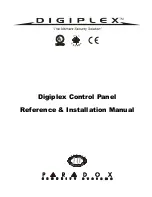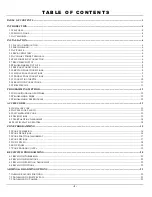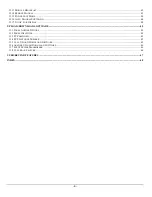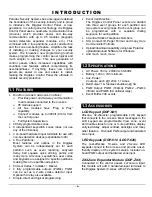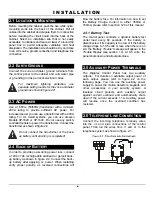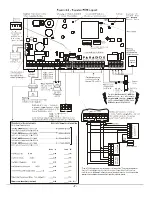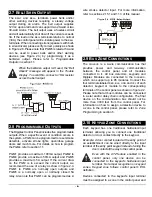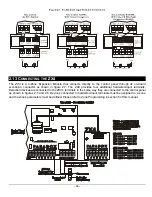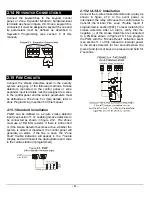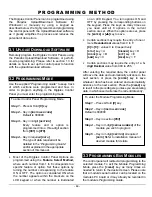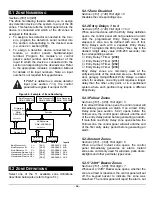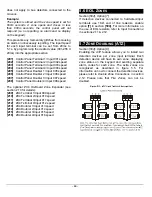
- 8 -
2.7 B
ELL
/S
IREN
O
UTPUT
The
BELL
+ and
BELL
- terminals power bells and/or
other warning devices requiring a steady voltage
output during an alarm. The bell output supplies
12V
DC
upon alarm and can support two 20-watt or two
30-watt sirens. The bell output uses a fuseless circuit
and will automatically shut down if the current exceeds
3A. If the load on the
BELL
terminals returns to normal
(
≤
3A), the control panel will re-instate power to the
BELL
terminals. When connecting sirens (speakers with built-
in siren drivers) please verify correct polarity as shown
in Figure 2.6. Please note that PGM5 is rated at 5A and
can be used to power bells and/or other warning
devices (see Figure 2.3) by programming it as a
bell/siren output. Please refer to
Programmable
Outputs
in section 11.
When the bell/siren output isn’t used, the “Bell
Absent” message will appear in the Trouble
Display. To avoid this, connect a 1K
Ω
resistor
across the bell output.
2.8 P
ROGRAMMABLE
O
UTPUTS
The Digiplex Control Panel includes five programmable
outputs. When a specific event or condition occurs in
the system, a PGM can be programmed to reset smoke
detectors, activate strobe lights, open/close garage
doors and much more. For details on how to program
the PGMs, refer to section 11.
PGM1 provides a maximum 100mA output, PGM2 to
PGM4 provide a maximum 50mA output and PGM5
provides a maximum 5A output. If the current draw
on the PGM is to exceed the current output, we
recommend the use of a relay as show in figure 2.4.
PGM1 to PGM4 are normally open outputs and
PGM5 is a normally open or normally closed 5A
relay. Also note that PGM1 can be programmed as 2-
wire smoke detector input. For more information,
refer to sections 2.15.1 and 11.3 of this manual.
2.9 B
US
Z
ONE
C
ONNECTIONS
The
DIGI
-
BUS
is a 4-wire communication bus that
provides power and two-way communication
between the control panel and all modules
connected to it. All bus detectors, keypads and
Digiplex Modules are connected to the
DIGI
-
BUS
,
which can support up to 95 modules. Connect the
four terminals labeled
RED
,
BLK
,
GRN
and
YEL
of each
detector, keypad or module to the corresponding
terminals of the control panel as shown in figure 2.2.
Please note that all bus modules can be connected
in a star and/or daisy chain configuration. The final
device on the communication bus should not be
more than 3000 feet from the control panel. For
information on how to assign a detection device to
a zone in the control panel, please refer to
Zone
Programming
in section 5.
2.10 K
EYPAD
Z
ONE
C
ONNECTIONS
Each keypad has one traditional hardwired-input
terminal, allowing you to connect one traditional
detector or door contact directly to the keypad.
Example: A door contact located at the entry point of
an establishment can be wired directly to the input
terminal of the entry point keypad instead of wiring the
door contact all the way to the control panel.
Even with the ATZ feature enabled in the
control panel, only one device can be
connected to the keypad’s hardwired-input
terminal. No tamper recognition on keypad
zones. Keypad zone follows control panel’s EOL
definition.
Devices connected to the keypad’s input terminal
must be assigned to a zone in the control panel and
Summary of Contents for Digiplex
Page 1: ...Digiplex Control Panel Reference Installation Manual ...
Page 8: ... 7 ...
Page 54: ......

